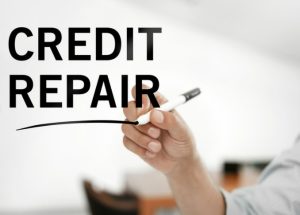Table of Contents
In today’s environment, where a transaction has switched to the internet and consumers have begun to invest in credit transactions. With the increasing interest of investors in credit investments, the number of credit rehabilitation enterprises has also begun to rise. As a result, beginning your own credit restoration business isn’t as tough as it appears.
A credit repair company may appear to be incredibly profitable, but if you understand the basics, anyone can start a credit repair business effectively with a little hard work and a prior understanding of the sector. In this post, we will go through the fundamentals of How to start a credit repair business in great depth.
Before we jump into learning how to start a credit repair business let us first understand what it actually means.
What Is A Credit Repair Business?
Credit repair firms provide completely managed services that help individuals improve their credit score or qualify for credit. A credit repair firm is ideally defined as an organization that offers to enhance credit in return for a charge. Clients with negative credit seek credit repair services with the purpose of helping them improve their credit.

Credit repair businesses promise to dispute false negative information on the client’s credit report. On behalf of their customer, this company administers the whole process, including communication with credit bureaus, creditors, lenders, and collection agencies. As a result, anyone with a thorough understanding of the procedure may start their own credit restoration firm.
Credit Repair Laws To Look Out For
- Credit Repair Organizations Act (CROA)
- Bonds
- Licensing
- Registration
Steps On How To Start A Credit Repair Business
1. Build A Strong Business Credit Repair Software
The first step in starting a credit repair business is to develop powerful credit repair software that will help you to increase productivity and produce faster and better outcomes for your clients. Because this programme is time efficient, you will spend less time on monthly manual duties.
With a good credit repair programme, all you need is 5-10 minutes each month to spend on each client dispute. The following key responsibilities would take up the majority of the time spent running a credit repair business:
- Taking up new clients and offering an initial consultation
- Creating and delivering dispute letters to credit bureaus and suppliers
- Customer service and keeping consumers updated on their progress
You’ll receive a higher return on time spent operating the business if you automate these repetitive chores with this software, and you’ll be in a better position to scale up operations as your client base grows.
2. Creation Of Website
Creating a website for a credit repair service is critical to the success of your company. A potential customer’s initial impression of your company will be formed by your website. A website is vital for business since it is where customers and clients are attracted to a company or corporation.

A business website should have high website traffic and also have ideally seemed professional, welcoming, and instill trust in clients in your organization and brand. It should also be capable of gathering leads and new client registrations so that your company may contact them through email or phone.
3. Examine Licensing And Bonding Requirements
Laws vary by area, but in general, a credit repair company must apply for and get an occupational license. In addition, look into getting a surety bond from a bonding firm.
Credit repair firms are often required to be bonded in order to operate lawfully. A credit repair surety bond protects customers from any possible damage caused by your credit repair company’s conduct.
4. Establishing Billing And Invoicing
Because of the substantial participation of intermediaries, establishing billing and invoicing set up to accept credit cards may appear to be perplexing at first. Most credit repair software systems have client billing connections.
The first step in this process is to select a suitable payment gateway. This payment gateway is the organization that securely receives credit card and customer information before securely transmitting it to your merchant account for processing.
The second stage in this procedure is to open a merchant account. It is the firm that works directly with the acquiring bank to process each credit card payment and deposit it into the appropriate business checking account.
Finally, a recurring billing solution that allows you to easily examine, manage and control all invoices. This system can also manage to bill and invoice for clients automatically, so you don’t have to.
5. Dispute Resolution Techniques for Obtaining Removals and Deletions for Your Client
Initial Credit Freeze
Freezing the customer’s credit with the assistance of companies such as SageStream and LexisNexis will ensure that no one has access to your client’s credit information. The key reason for doing it as a first step is to avoid the three major credit bureaus from cross-referencing their own data with your clients’ data.
Remove Outdated And Obsolete Addresses
You may also erase any old and out-of-date addresses from each client’s credit report as soon as they join up. Because past charge-off and collection accounts can often be linked directly to these old locations, deleting them from your client’s credit record may make it more difficult to verify these accounts.
Disputing Inquires And Other Information
Disputes for your customer are based on one of the following:
- Disproving a factual access record
- Demonstrating or asserting identity theft
- Demonstrating a lack of authorized purpose
As you get to experience credit reports and the types of negative reporting that may be found on them, you will be able to begin disputing a broader range of information for your customers.

Finally, you’re ready to welcome your first customer. This final phase also includes a framework for obtaining your first customer. As a result, the phases in the onboarding process are as follows.
- Step 1 – The initial consultation allows you to evaluate your client’s credit record and assess whether they are a good fit for your service. It also entails detecting unfavorable information on the client’s credit report and assessing which things are likely to be incorrect or unverifiable.
- Step 2 – The following step in the client onboarding process is to have your customer sign your credit repair contract. Before you can begin offering credit repair services to your consumers, you must first comply with the Credit Repair Organization Act and sign this paper.
- Step 3 – The first charge, as stipulated in the contract, would be collected, which would cover items such as initial document processing. The Credit Repair Organization Act forbids credit repair organizations from collecting fees prior to providing a service. After supplying your customer with the services specified in the contract, you can bill them for your initial first work cost.
- Step 4 – The next step is to start your monthly dispute cycle. Then, until all of the disputes are settled or your customer decides to discontinue your services, you can challenge erroneous negative things on your client’s credit report.
Conclusion
Though nothing comes easy in life, it is the same as starting a business. Starting your own business with your own interest is inappreciable, but you should also focus on increasing your income. Check out the site bitcoin-fastprofit.com/de where you can trade cryptocurrencies and make more money in a short time. With the above-given information on How To Start A Credit Repair Business, you are now capable of starting your own credit repair business.

